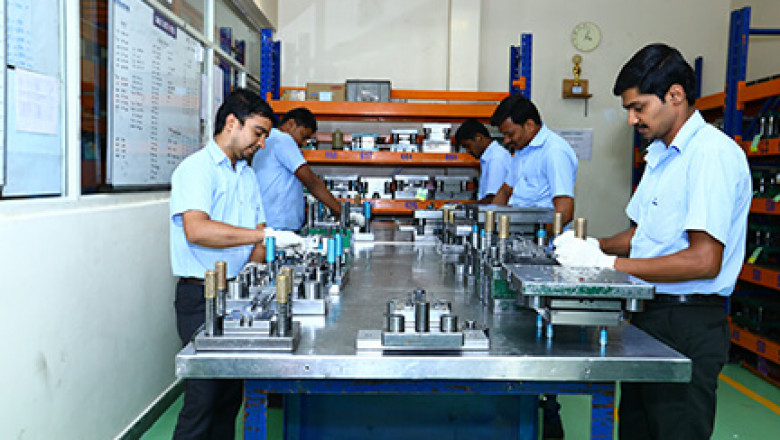views
Stamping Tools and Dies: Precision Metal Forming for Efficient Manufacturing
Stamping tools and dies are crucial for precisely forming metal into desired shapes. Metal sheets can be cut and formed with the aid of stamping equipment. Stamping tools and die is becoming essential in various fields. This guide discusses the various stamping methods, materials, and important factors for efficient operation. The first step in every production, whether big or small, is to learn these basics.
What Is a Die and Stamping Tool?
Precision-engineered tools and dies are used to cut and form metal sheets into the required shapes in the metal stamping process. The precision tool and dies industry is becoming more popular in recent times. There are two primary components to it:
Punch - The punch is a sturdy object that forms its shape by pressing it into metal.
Die - The die is the matching opening or surface on which the material is cut or produced.
Components of a Stamping Die
A stamping die is a specialized tool used in metal stamping to cut or shape metal sheets into certain shapes. It is composed of many parts that cooperate to offer efficiency and accuracy.
Die Block: This is the main body of the die, houses all the other components, and provides structural support.
Punch - A punch is a hardened steel component that presses into a metal sheet to cut or form it into the required shape.
Die Cavity - The metal part is molded or cut to match the punch and produce the correct shapes.
Stripper Plate - A plate that separates the metal sheet from the punch after stamping to avoid adhering.
Guide Pins and Bushings - These provide appropriate punch and die chamber alignment and allow for precision operation.
Pilots - It aids in precisely positioning the metal sheet for subsequent stamping process.
Fasteners and Mounting Plates - Join the die's components and fasten it to the stamping press.
Applications of Stamping Tool and Die
Stamping tools and dies are essential for producing metal components in numerous sectors. These instruments cut and mould metal sheets into the desired forms using precise mechanics. The automotive industry uses stamping tools and dies to make consistent body panels and engine parts.
Electronic Sector
These tools are used in the electronics sector to help make small and complex parts with great precision and repeatability. They are also used to fabricate lightweight and strong aircraft components that ensure safety and performance in harsh environments.
Household Appliance
Household appliance manufacturers use stamping techniques to create metal casings and ornamental panels that enhance the reliability and beauty of their products.
Construction Industry
Stamping tools and dies are used in the construction industry to fabricate metal beams and fasteners necessary for structural stability. Stamping is also used to produce many consumer products.
Key Factors for Effective Stamping
To ensure high-quality tool and die design, numerous things must be considered:
Material Selection
The type of metal used determines the quality and durability of stamped items.
Steel and copper are often used materials.
Die Maintenance
Regular inspection and maintenance of dies are critical for defect prevention.
Lubrication and honing of cutting edges improve both performance and longevity.
Press Machine Selection
Different stamping presses offer varying degrees of force and speed.
Choosing the proper media gives the best performance and efficiency.
Tolerance and Precision
Dies that are properly built with tight tolerances save material waste while also improving product quality.
Safety Measures
Operators should adhere to safety rules like wearing protective clothing and employing machine guards.
Automated technologies can assist in reducing human error while increasing safety.
Advantages of Stamping Tools and Die
Large quantities of parts may be manufactured quickly and with little waste.
Ensure uniformity and tight tolerances in manufacturing.
Stamping is cheaper for mass production than other metal fabrication technologies.
This can be utilized with different metals and in a range of applications.
Summing It Up
Modern production relies heavily on stamping tools and dies because they offer cost savings, accuracy, and efficiency in metal fabrication. Beginners can confidently traverse the stamping world if they understand its components' applications and important factors. Manufacturers may increase productivity and effectively produce high-quality stamped components by investing in appropriate material selection, die maintenance, and safety precautions.














Comments
0 comment